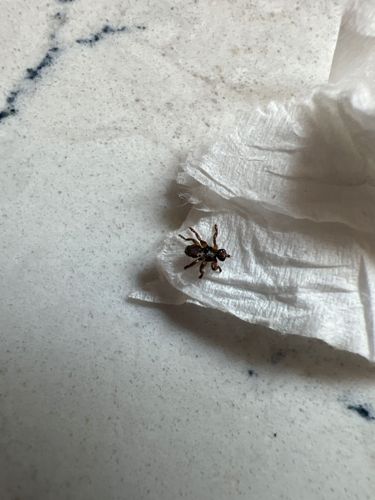Army Ant (likely a species of Ecitoninae)
Scientific Name: Eciton species (e.g., Eciton burchellii) or Dorylus species. While it's difficult to identify the exact species from the image, it strongly resembles an army ant due to the body shape, leg structure, and the presence of a strong mandible.
Order & Family: Hymenoptera, Formicidae (subfamily Ecitoninae or Dorylinae, depending on classification)
Size: Workers vary significantly in size, ranging from a few millimeters (major workers can be up to 12-15 mm) to over 20 mm for some queens.

Natural Habitat
Tropical and subtropical regions, typically found in forests, grasslands, and disturbed areas. They prefer humid environments and are often subterranean or found under leaf litter during their resting phases.
Diet & Feeding
Primarily carnivorous, preying on other insects, arachnids, and small vertebrates. They are generalist predators, overwhelming anything in their path.
Behavior Patterns
Army ants are known for their aggressive predatory behavior, forming large foraging columns that overwhelm prey. They do not build permanent nests but instead alternate between a nomadic phase (daily moving and raiding) and a statary phase (remaining in one location to rear brood). During the statary phase, they form a living nest called a "bivouac" from their own bodies. They are highly organized and communicate through chemical signals (pheromones).
Risks & Benefits
Potential Risks: Army ants are known for their painful bites and stings, though generally not medically significant to humans unless large numbers are encountered or there's an allergic reaction. They can be a nuisance if they enter human dwellings, consuming stored food or invading pets' food. Potential Benefits: They play a significant role as predators in their ecosystems, helping to control populations of other insects and contributing to nutrient cycling.
Identified on: 8/13/2025